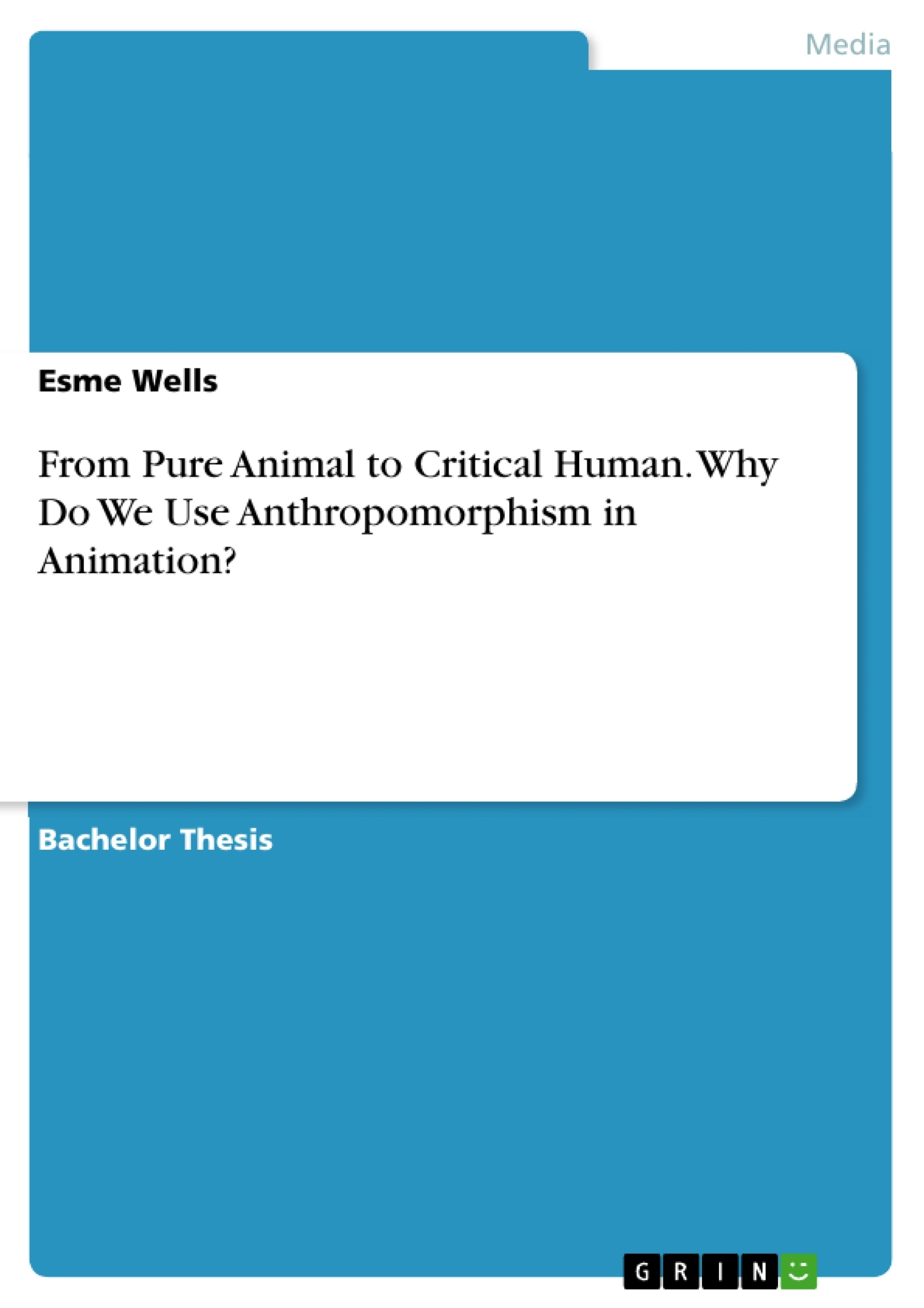The subject that will be covered in this dissertation is the use of Anthropomorphism in animated film including Halas & Batchelor’s “Animal Farm”, Disney’s “Beauty and the Beast” and “The Lion King”. Why do films such as these use animals as the protagonist? The dissertation analyses the research found on anthropomorphism and the authors that have covered the reasons why animals are used so widely in animation. The term anthropomorphism is used when an animal or object is given human characteristics and behaviour. The first implication of anthropomorphism came about in the late 19th century and as independent scholar Nigel Rothfels states:
“It was during the nineteenth century, with the rise of modernism in literature and art that animals came to occupy the thoughts of a culture in transition. As they disappeared, animals became increasingly the subjects of a nostalgic curiosity.” (Rothfels, 2002:124)
Rothfels informs us that the original meaning of anthropomorphism was connected with the use of animal icons in religion. Lecture Robin Allan in his essay “European influences on early Disney feature films” (1997:245) agrees that anthropomorphism is ancient and from “Aesop onwards (it) has been used for many purposes including social and political satire.” During modernity there was a shift in beliefs and with this change animals represented culture in transition and there was an element of sentimentality to anthropomorphism and in the 20th century the growth of technology saw this expand further. According to evidence gathered from research in sociology covered in more depth in Sun Ping, Teacher of Ideological and Political Theory at a University in Beijing article (May 2015) Animals and humans share many similar traits and that it is possible for humans and animals to interact harmoniously.
Inhaltsverzeichnis (Table of Contents)
- Introduction
- Chapter 1. Animal Farm
- Chapter 2. Beauty and the Beast
- Chapter 3. The Lion King
- Conclusion
- Bibliography
- List of Illustrations
Zielsetzung und Themenschwerpunkte (Objectives and Key Themes)
This dissertation explores the use of anthropomorphism in animated film, examining how and why animals are portrayed with human characteristics and behaviors. It analyzes the motivations behind the use of animals in animation, drawing upon existing research and theoretical frameworks to understand this phenomenon. The work focuses on three specific films: Animal Farm, Beauty and the Beast, and The Lion King, providing an in-depth analysis of their narrative strategies, character development, and thematic content.
- The history and evolution of anthropomorphism in animation
- The role of anthropomorphism in conveying social and political messages
- The impact of anthropomorphism on the portrayal of violence and taboo subjects in animation
- The relationship between anthropomorphism and the "Disneyfication" of fairy tales
- The cultural significance of anthropomorphism in animation, particularly in its appeal to children
Zusammenfassung der Kapitel (Chapter Summaries)
- Chapter 1: Animal Farm: This chapter delves into the motivations behind George Orwell's use of animals in his novel Animal Farm and the subsequent animated adaptation by Halas and Batchelor. It explores the film's serious approach to social commentary and analyzes its characters and scenes through the lens of Paul Wells' Bestial Ambivalence model, which examines the interplay between animal and anthropomorphic elements in animated narratives.
- Chapter 2: Beauty and the Beast: This chapter focuses on Disney's Beauty and the Beast, comparing it to the original fairy tale and examining the impact of "Disneyfication" on the story. The chapter explores the use of postmodern theory, particularly the concept of the "death of the author," to analyze the film's deviations from the original source material. It also contrasts the portrayal of violence in Beauty and the Beast with Animal Farm, exploring how the choice of an animal protagonist affects the depiction of conflict.
- Chapter 3: The Lion King: This chapter examines Disney's The Lion King, exploring how the film uses animation to create a sense of cuteness and soften potentially darker themes. It investigates the role of childhood experiences and the significance of teddy bears in relation to the film's themes and its appeal to children. The chapter draws upon theories from John Berger and Marina Warner to understand the cultural impact of Disney films and their use of anthropomorphic characters.
Schlüsselwörter (Keywords)
Anthropomorphism, animation, animal farm, beauty and the beast, the lion king, disney, fairy tales, postmodern theory, bestial ambivalence, violence, childhood, cultural impact.
- Quote paper
- Esme Wells (Author), 2016, From Pure Animal to Critical Human. Why Do We Use Anthropomorphism in Animation?, Munich, GRIN Verlag, https://www.grin.com/document/338189



